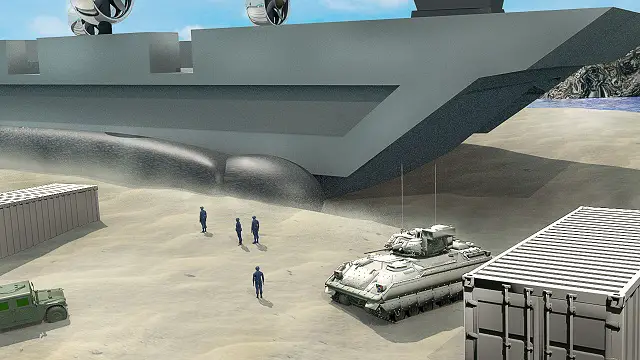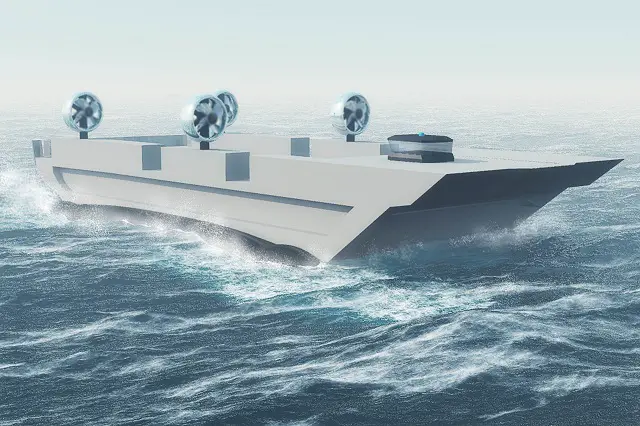 Official U.S. Navy file photo of an artist rendering of the Future Naval Capability project Transformable Craft, or T-Craft. Naval Surface Warfare Center Dahlgren Division (NSWCDD) principal scientist Steve Anderson received the 2014 NATO Science and Technology Organization's Scientific Achievement Award for impacting a task group's work - including T-Craft research - in support of NATO. In his research, Anderson used modeling and simulation to explore the effectiveness of T-Craft for humanitarian assistance and disaster relief efforts. The potential future U.S. and allied Navy air cushion vehicle could serve many purposes, including the transport of equipment and personnel between locations at sea and ashore during humanitarian assistance, disaster recovery, and major combat operations. (U.S. Navy graphic illustration by Victor Strickland/Released) |
|||
Moreover,
T-Craft complements U.S. Naval Sea-Basing strategy as a leap-ahead technology.
Initial designs propose a fuel-efficient craft capable of self deployment
during open ocean transits. T-Craft will enable high speed shallow-water
transits while fully loaded with at least four M-1 tanks, good sea-keeping
during cargo transfers at sea, and amphibious operations capability. Anderson briefed findings of his NATO work to myriad groups, from the NATO Technical Review, hosted by the Swedish Defense Research Agency, to the Modeling and Simulation World Conference where his paper won "Best Paper in Defense, Homeland Security and First Responders." "I would encourage anyone with an opportunity to participate on a NATO panel or working group to do so," he said. "If you go with an open mind and a willingness to listen, it will change you perspectives in so many ways." MSG-088 participation included members from the eight countries cited in the award - Australia, Canada, Finland, Germany, Singapore, Sweden, Turkey, and the United States - but also included visitors from France, Holland, Portugal, and the United Kingdom. |
|||
U.S. Navy Scientist Wins NATO Scientific Achievement Award For T-Craft Project
- Posted On




